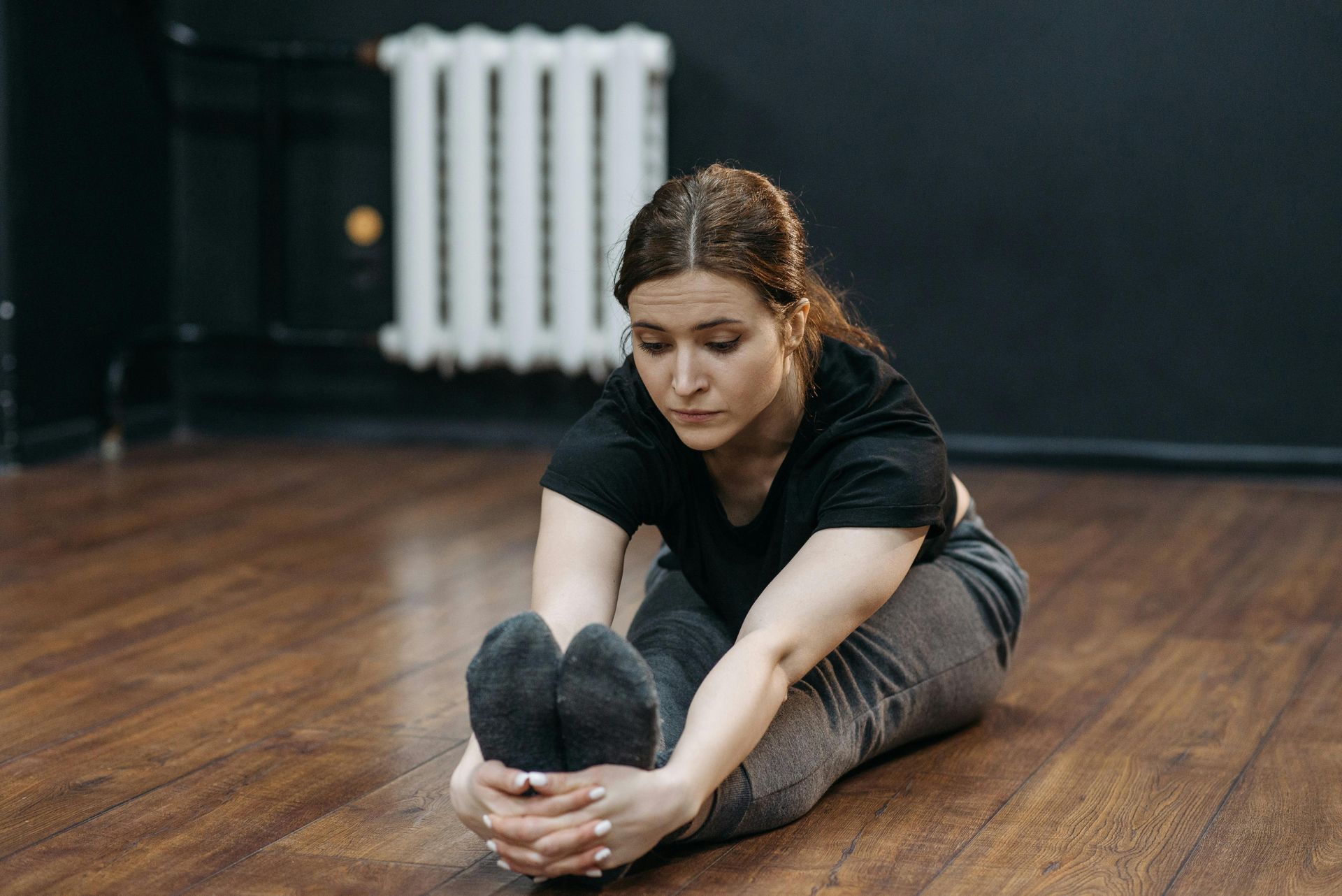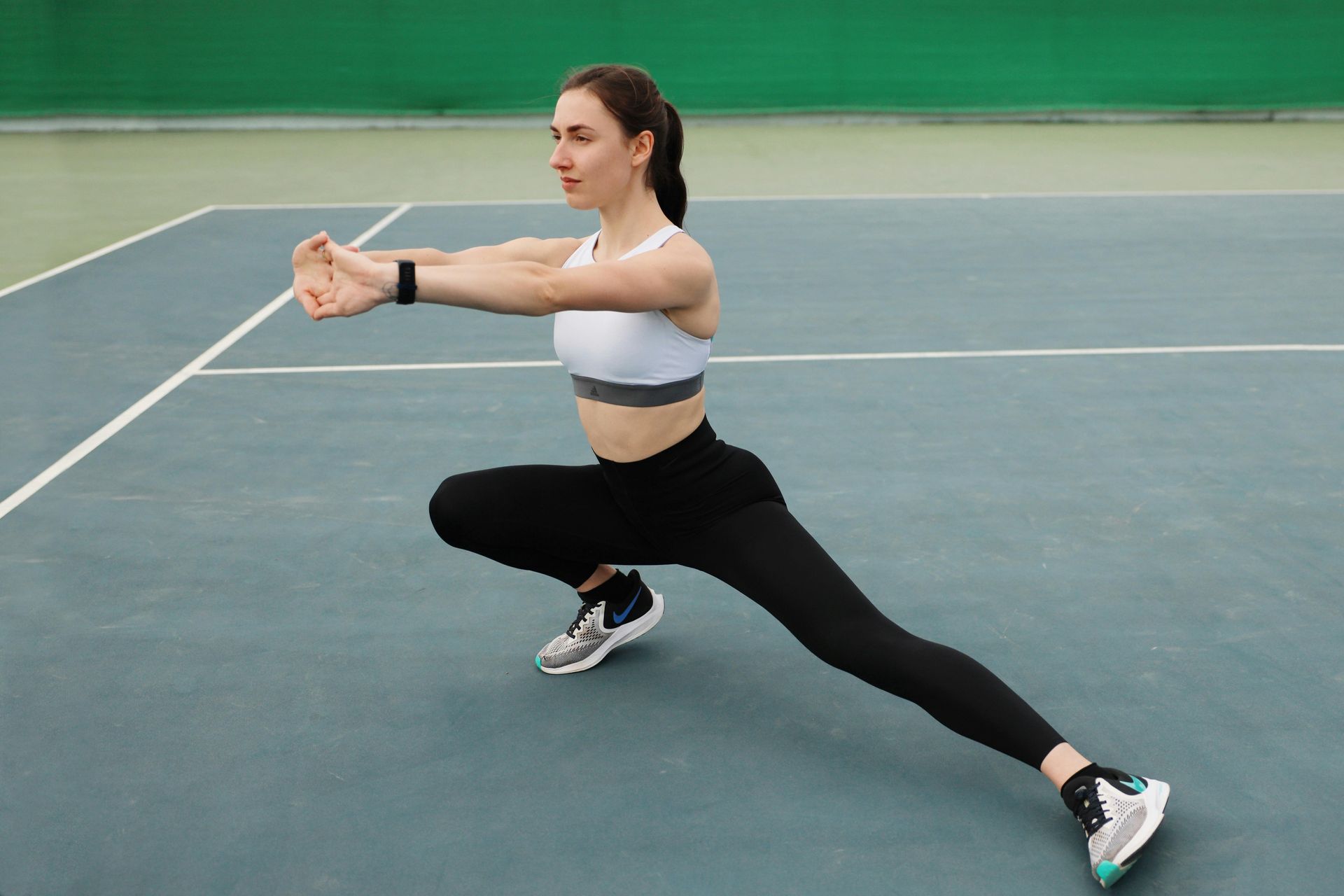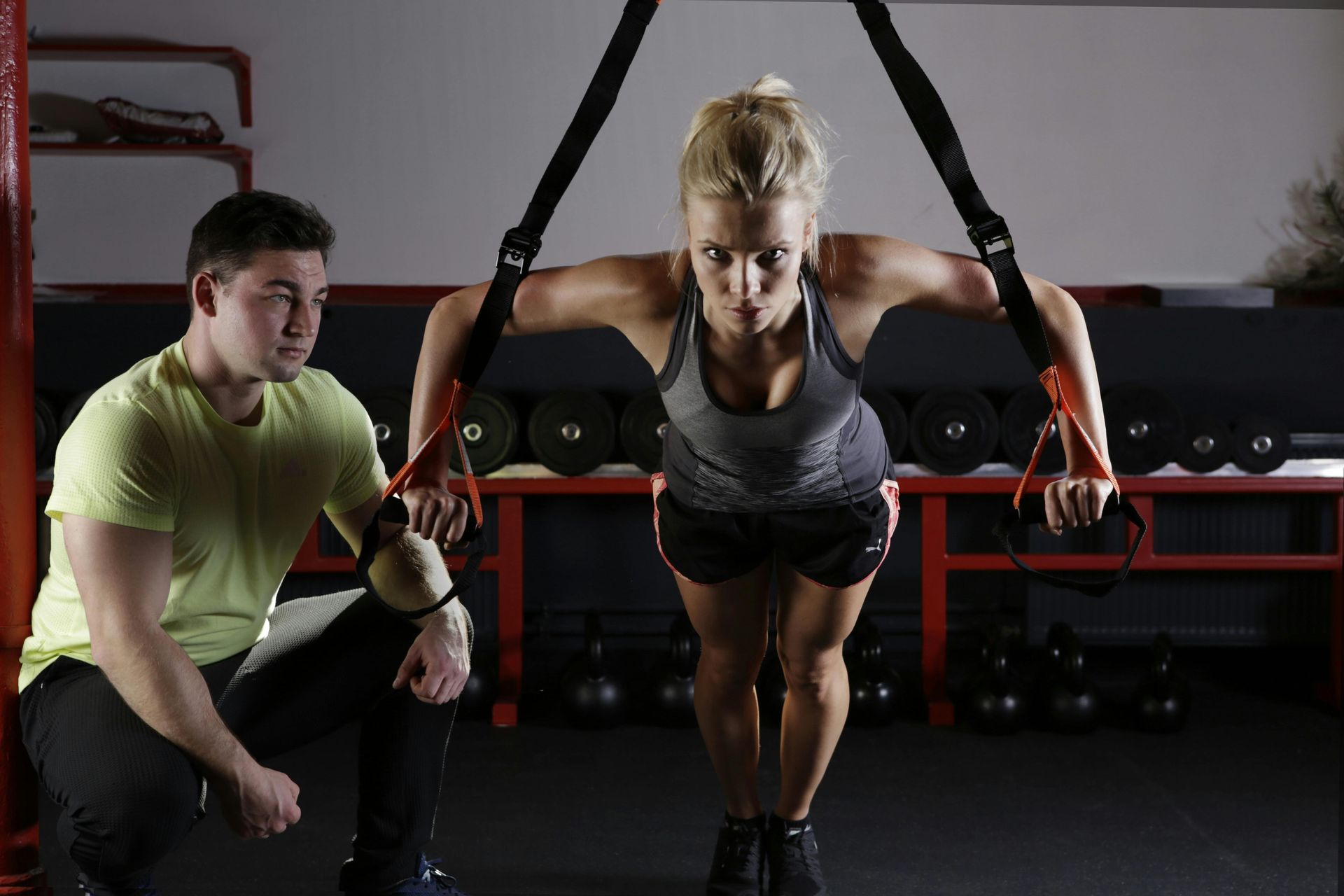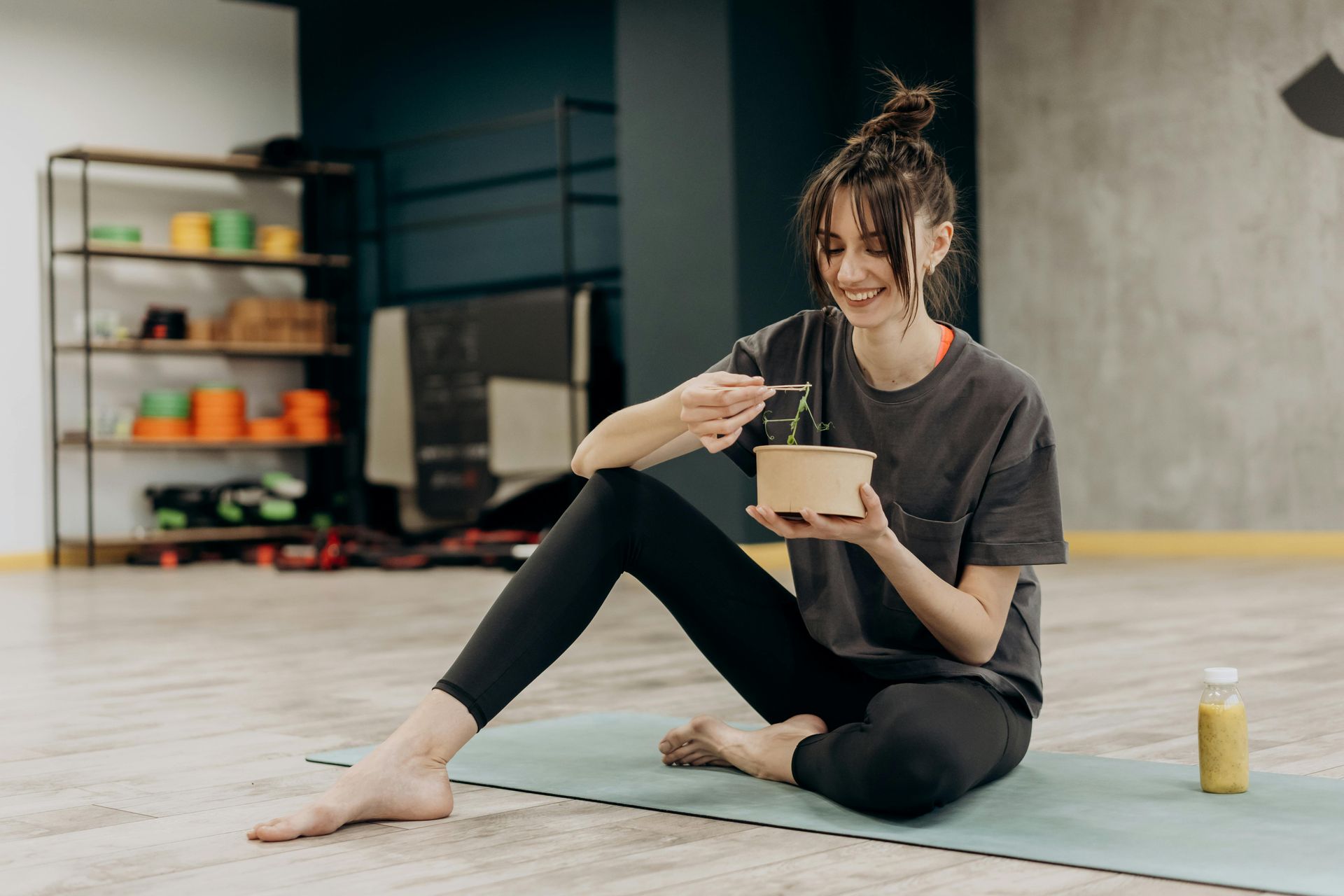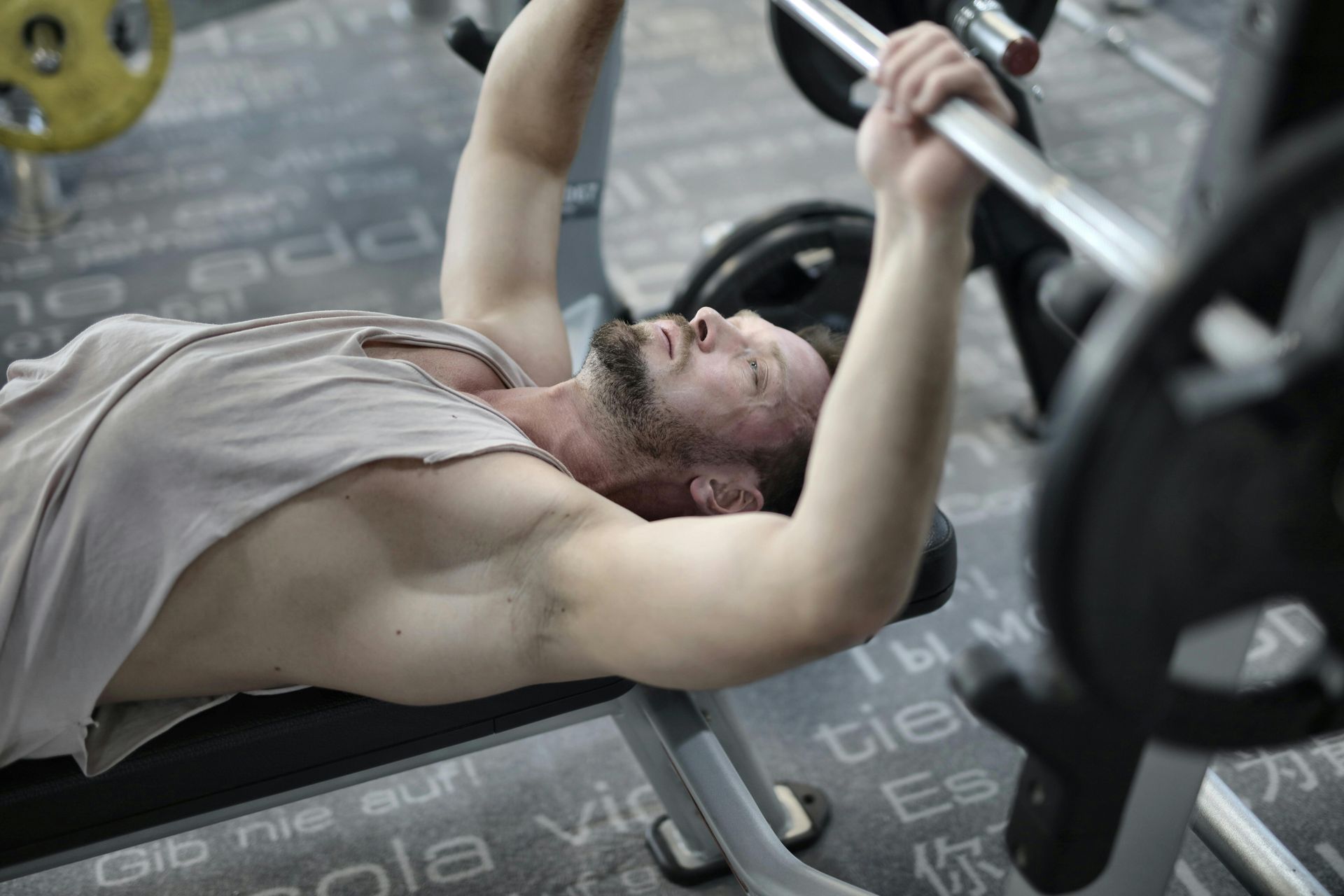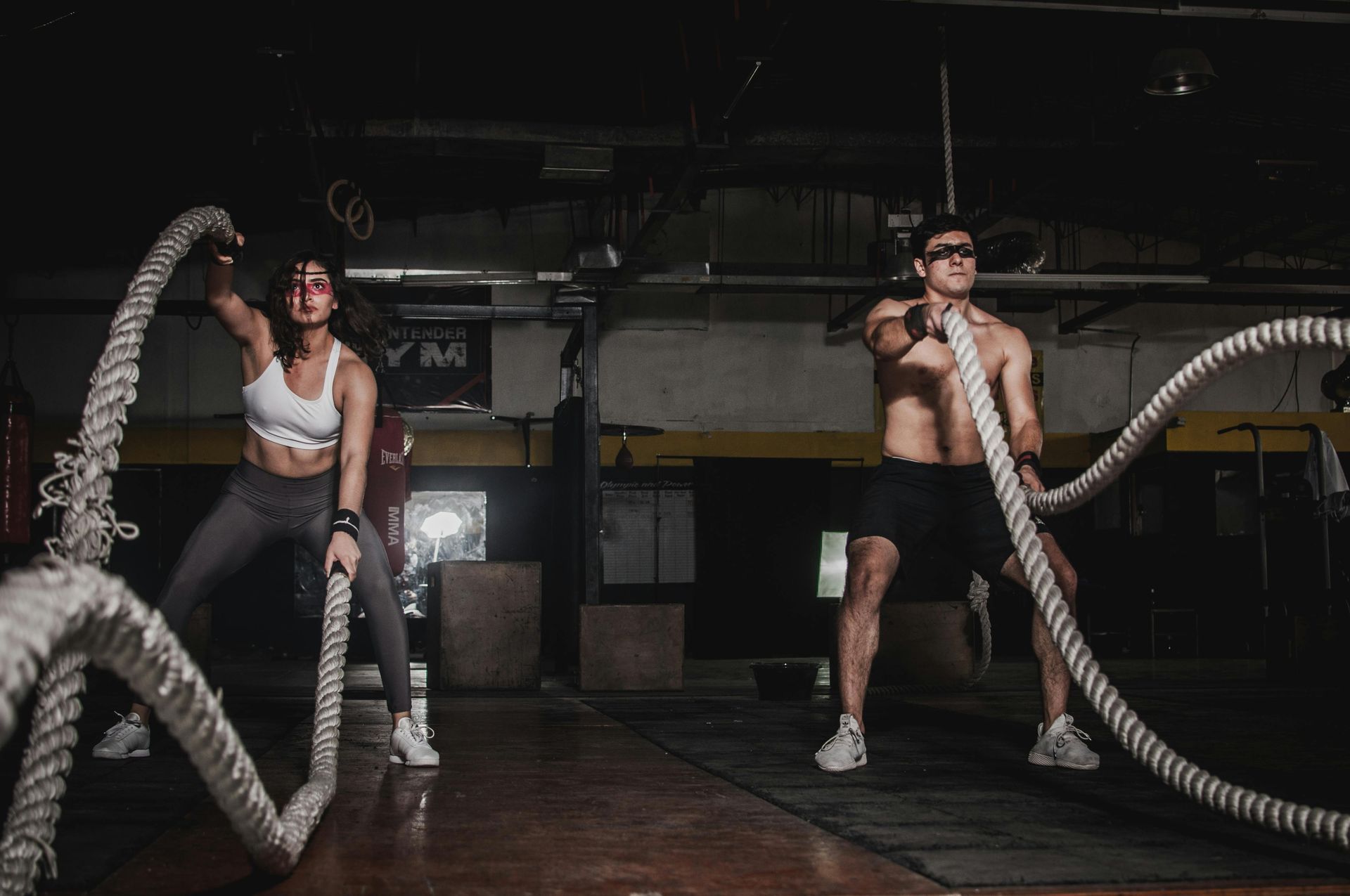The Social Determinants of Health and Fitness: The Tapestry of Well-being
Beyond the personal

The Social Determinants of Health and Fitness: The Tapestry of Well-being
At Holistic Training, we champion a view of well-being that extends far beyond sets and reps or calorie counts. It’s about recognizing the intricate web of factors that influence our health and fitness journey. This blog post weaves together several key themes regarding the social determinants of health that form the very fabric of our holistic approach. Understanding these elements is crucial to truly unlocking your potential for a healthier and more fulfilling life.
Bridging the Gap: Connecting Social Realities to Your Training and Nutrition
There’s often a disconnect between the personalized advice we receive about exercise and nutrition and the realities of our everyday lives. "Eat healthier," we're told, or "exercise more." But what if access to affordable, nutritious food is limited? What if the only time available for movement is compromised by long commutes or multiple jobs? This is where the social determinants of health come into play. They highlight the systemic factors – like socioeconomic status, education, and access to resources – that create gaps in opportunities for health and well-being. Holistic training acknowledges these gaps and encourages us to find creative and adaptable solutions within our individual circumstances, while also advocating for broader societal changes.
The phrase "eat healthy and exercise more" has become a ubiquitous piece of health advice. While fundamentally sound, it often lacks the necessary context and understanding of the diverse realities people face. For someone with ample resources, a stable income, and access to a variety of grocery stores and fitness facilities, implementing this advice might be straightforward. However, for a significant portion of the population, these seemingly simple recommendations can feel insurmountable.
Consider the following:
- Socioeconomic Status: Someone working multiple low-wage jobs to make ends meet might have limited time and energy for preparing nutritious meals from scratch. Fast food, while often less healthy, can be a more convenient and affordable option when time is scarce. Similarly, the cost of gym memberships or specialized fitness equipment can be prohibitive, leaving free or low-cost options as the only viable alternatives.
- Education and Health Literacy: Understanding nutritional labels, knowing the benefits of different types of exercise, or even being aware of available community resources requires a certain level of health literacy. Individuals with limited educational opportunities might lack this knowledge, making it difficult to make informed decisions about their health and fitness.
- Access to Resources: This extends beyond just gyms and grocery stores. It includes access to safe places to exercise outdoors, reliable transportation to reach healthcare providers or healthy food outlets, and even access to clean water for hydration. In areas designated as "food deserts," for instance, the only readily available options might be convenience stores with limited fresh produce, making healthy eating a significant challenge.
- Time Constraints: In today's fast-paced world, many individuals struggle to balance work, family responsibilities, and personal well-being. Long commutes, demanding work schedules, or caring for dependents can leave little to no time for dedicated exercise or meal preparation. This makes generic advice like "aim for 30 minutes of exercise daily" feel unrealistic and even discouraging.
Holistic Training recognizes these systemic barriers and shifts the focus from a one-size-fits-all approach to personalized, adaptable solutions. We acknowledge that health and fitness are not solely matters of individual willpower but are deeply intertwined with our social and economic circumstances.
Beyond the Gym: How Your Neighborhood Shapes Your Fitness
Our physical environment plays an undeniable role in our ability to be active. The accessibility of safe parks, walkable streets, and affordable fitness facilities directly impacts our opportunities for movement. Remember, fitness isn't confined to structured workouts. A neighborhood that encourages walking or cycling for errands, provides safe spaces for children to play, or offers community sports programs naturally fosters a more active lifestyle. A holistic approach encourages us to see our neighborhood as an extension of our fitness routine, utilizing the resources available and finding ways to integrate movement into our daily lives, wherever we are.
We often associate fitness with dedicated spaces like gyms or scheduled exercise classes. While these are certainly valuable, a truly holistic approach to well-being recognizes that movement opportunities exist all around us, often right outside our front door. Our neighborhood, with its unique characteristics, can either be a catalyst or a hindrance to incorporating regular physical activity into our lives.
Consider the elements of your neighborhood:
- Parks and Green Spaces: Imagine having a park within walking distance. This isn't just a pretty view; it's an invitation to move. It could be a place for a morning jog, an evening stroll, a family bike ride, or even a spot to lay down a mat for some yoga or bodyweight exercises. The availability of well-maintained green spaces encourages outdoor activity and provides a refreshing alternative to indoor workouts.
- Walkability and Sidewalk Infrastructure: Think about running errands. Is it easy and safe to walk to the local grocery store, post office, or coffee shop? Good sidewalks, pedestrian crossings, and shorter distances between amenities can transform everyday tasks into opportunities for movement. A walkable neighborhood naturally integrates physical activity into your routine without requiring extra time or planning.
- Bike Lanes and Paths: For those who prefer cycling, the presence of dedicated bike lanes or shared-use paths can make all the difference. A bike-friendly neighborhood encourages active transportation, allowing you to combine your commute or errands with a workout.
- Safety and Accessibility: Feeling safe while walking or biking in your neighborhood is paramount. Well-lit streets, low traffic speeds, and a sense of community vigilance can encourage more people to be active outdoors. Accessibility for individuals with mobility challenges, such as ramps and smooth pavements, is also crucial for creating an inclusive environment for movement.
- Community Amenities and Programs: Does your neighborhood offer public sports courts (basketball, tennis), community gardens that involve physical labor, or local recreational centers with affordable programs? These shared resources can provide accessible ways to engage in physical activity and connect with others in your community.
A holistic perspective encourages us to shift our mindset and view our neighborhood not just as a place we live in, but as an extension of our fitness routine. Instead of thinking, "I need to go to the gym to exercise," we can start asking, "How can I be more active within my neighborhood today?"
More Than Meals: Nourishing Well-being Beyond Macronutrients
While understanding macronutrients is valuable, true holistic nutrition goes beyond just what's on our plate. It helps to dive into the social determinants that influence our dietary choices and overall relationship with food. Factors like food security, food prices, access to grocery stores selling fresh produce, and the cultural and social context of eating all play a significant role. Holistic nutrition acknowledges these complexities and encourages us to make informed choices within our means, focusing on whole foods and mindful eating practices. It also recognizes the emotional and social aspects of food, emphasizing nourishment.
Consider the following:
- Food Security: This is a foundational aspect. Food security refers to having consistent access to enough safe and nutritious food to maintain an active and healthy life. For many individuals and families, this is a daily struggle. When resources are limited, the priority often shifts to affordability and accessibility, which can sometimes mean opting for cheaper, less nutritious options.
- Access to Grocery Stores and Fresh Produce: Even with sufficient income, access to quality food can be a challenge. "Food deserts" are areas where residents have limited access to affordable and nutritious food, particularly fresh fruits and vegetables. This could be due to the absence of supermarkets or farmers' markets in their vicinity.
- Cultural and Social Context of Eating: Food is more than just fuel; it's deeply embedded in our cultures, traditions, and social interactions. Family meals, holiday gatherings, and community events often revolve around food. Our cultural background shapes our food preferences, cooking methods, and even our perceptions of what constitutes a "healthy" meal. Holistic nutrition acknowledges these influences and encourages us to find ways to nourish ourselves that are both health-promoting and culturally relevant.
- Food Marketing and Availability: The food environment we are constantly exposed to also significantly impacts our choices. Aggressive marketing campaigns for processed foods and the widespread availability of less healthy options can make it challenging to consistently choose nutritious foods. Understanding this landscape empowers us to make more conscious decisions.
- Education and Nutritional Literacy: Knowing what constitutes a healthy diet and how to prepare nutritious meals are crucial skills. Access to quality nutrition education can empower individuals to make informed food choices, read food labels effectively, and cook healthy meals even on a budget.
This approach to nutrition encourages us to move beyond a narrow focus on calories and macronutrients and to consider the broader social, cultural, emotional, and practical factors that influence our relationship with food. It's about making informed choices within our individual circumstances, seeking out available resources like local farmers' markets or food assistance programs when needed, and finding ways to nourish ourselves.
The Power of Connection: Social Support and Well-being
Finally, our connections with others form an essential pillar of holistic health. This theme highlights the profound impact of social support, community, and belonging on our mental and physical well-being. Strong social networks provide emotional support, motivation, and a sense of accountability, all of which are crucial for maintaining healthy habits. Whether it's finding a workout buddy, joining a community group focused on health and wellness, or simply connecting with loved ones, nurturing our relationships is an integral part of holistic training. Our social environment can either be a barrier or a powerful catalyst in our journey towards optimal health.
In our journey towards greater health, we often focus on individual actions like our workouts and diets. However, the strength of our social connections is an equally vital, and often overlooked, pillar of our overall well-being. The human need for connection is fundamental, and nurturing our relationships can have profound positive impacts on both our mental and physical health.
Consider these benefits of strong social networks:
- Emotional Support: Life inevitably throws curveballs. Having a network of supportive friends, family, or community members provides a crucial buffer during stressful times. Sharing our challenges, receiving encouragement, and knowing we're not alone can significantly impact our resilience and mental well-being. This emotional support can be a powerful motivator to stay on track with our health goals.
- Reduced Feelings of Isolation and Loneliness: Loneliness and social isolation can have detrimental effects on our mental and even physical health. Connecting with others who share our interests, whether it's a fitness activity, a hobby, or a community cause, can combat these feelings and foster a sense of belonging. This is where joining local community groups can be incredibly beneficial.
- Increased Opportunities for Activity: Social connections often lead to more opportunities for physical activity. Friends might invite you for a hike, a neighbor might suggest a bike ride, or joining a local fitness club can expose you to a variety of group exercise options.
- Shared Experiences and Joy: Exercising and pursuing healthy habits with others can simply be more enjoyable. Sharing the experience of a challenging workout, celebrating milestones together, or even just having someone to chat with during a walk can make the journey more fun and sustainable. Social activities within groups can also provide opportunities for enjoyable and active social engagement.
Holistic Training emphasizes the importance of nurturing these social connections. It encourages us to be proactive in building and maintaining relationships that support our well-being. This could mean reaching out to a friend for a walk, joining a local club that aligns with your interests, or simply making an effort to connect with your neighbors.
Our social environment can indeed be a powerful catalyst in our journey towards optimal health. By recognizing and cultivating the power of connection, we can build a supportive network that enhances our motivation, strengthens our resilience, and ultimately contributes to a more fulfilling and healthier life.
Weaving It All Together
These themes aren't isolated concepts; they are threads in the rich tapestry of our overall well-being. Recognizing the interconnectedness of bridging the gaps created by social inequities, exploring the fitness opportunities within our environment, nourishing ourselves beyond just the nutritional content of food, and nurturing meaningful connections allows us to adopt a truly holistic approach to training and life.
At Holistic Training, we encourage you to consider these broader influences as you navigate your personal wellness journey. By understanding the social determinants of your health and fitness, you can empower yourself to make informed choices, advocate for positive change, and ultimately cultivate a more balanced and fulfilling life.
Key Takeaways:
Here are the key takeaways from the blog post:
- Holistic Well-being is Multifaceted: a holistic approach goes beyond just exercise and diet, encompassing a wide range of interconnected factors.
- Social Determinants Matter: Our health and fitness are significantly influenced by social determinants like socioeconomic status, education, access to resources, neighborhood environment, and social connections.
- Generic Health Advice Often Ignores Realities: Simple advice like "eat healthy and exercise more" doesn't account for the diverse challenges people face due to their social circumstances.
- Bridging the Gap Requires Adaptability: Holistic Training encourages finding creative and personalized solutions for training and nutrition within individual constraints and advocates for broader societal changes to improve health equity.
- Your Neighborhood Impacts Your Activity: The accessibility of safe parks, walkable streets, and community amenities directly influences opportunities for movement beyond structured workouts.
- Nutrition is More Than Macronutrients: Holistic nutrition considers food security, access to fresh produce, cultural influences, emotional aspects, and nutritional literacy, emphasizing informed choices within one's means.
- Social Connection is Crucial for Well-being: Strong social support networks provide emotional support, motivation, accountability, and reduce isolation, all of which are vital for maintaining healthy habits.
- Interconnectedness of Themes: These themes are not isolated but are interwoven, highlighting the complex interplay of factors that contribute to our overall health and fitness.
- Empowerment Through Understanding: Recognizing the influence of social determinants empowers individuals to make informed choices, advocate for change, and cultivate a more balanced and fulfilling life.



